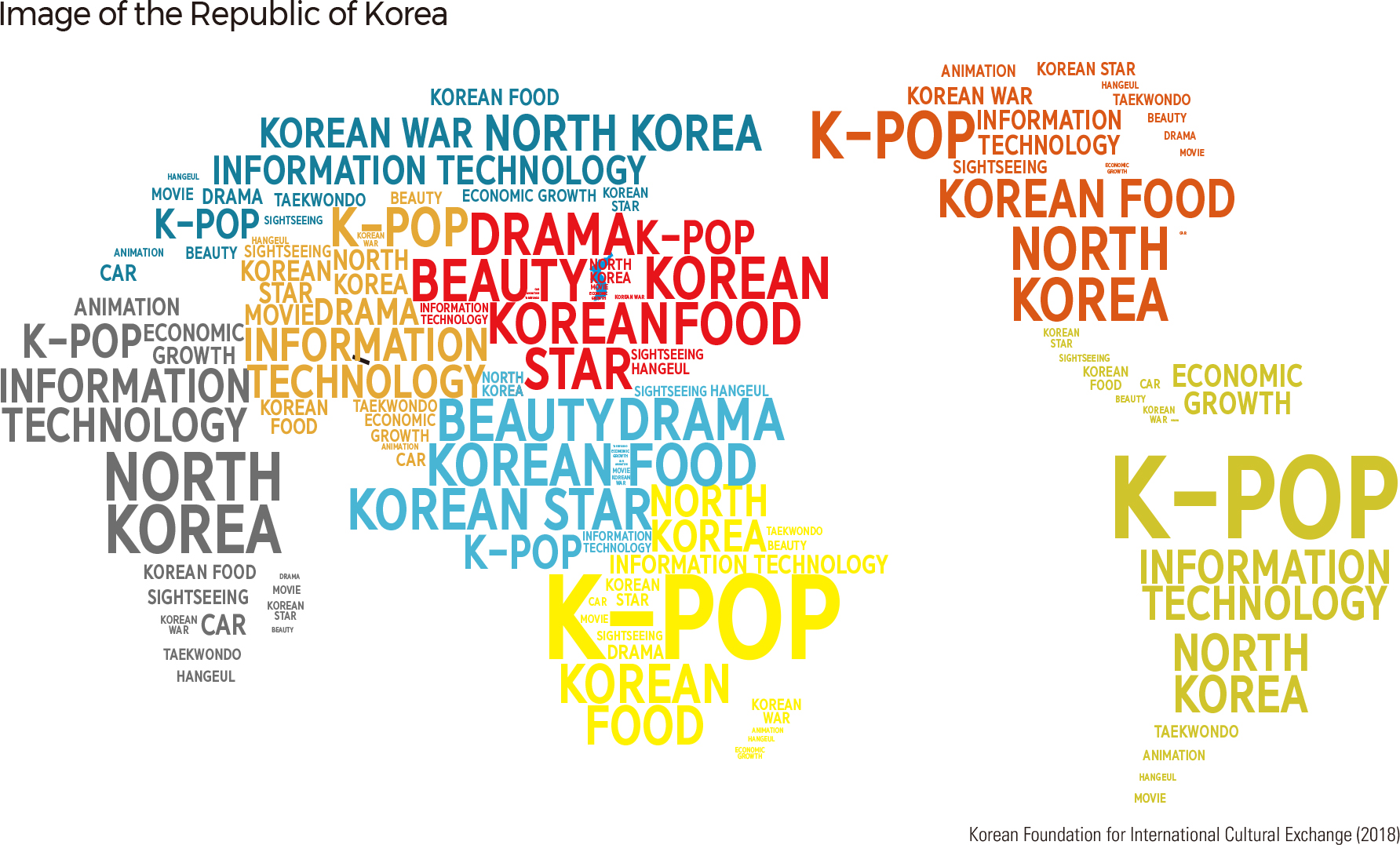Comprehensive Edition 2022
South Korea is increasingly well-connected with the rest of the globe through international diplomacy, educational exchanges, tourism, and trade. Perhaps Korea’s most widely-dispersed export is that of Korean culture: K-pop, K-dramas, animations, comics, and Korean-designed video and computer games. The term Korean Wave expresses the recent, rapid spread of Korean culture throughout Asia and across the world.
The origin of the Korean Wave can be traced back to Korean TV dramas in 1997, which were televised by CCTV in China. From then through the early 2000s, Korean dramas and Korean pop songs gained popularity in China, Taiwan, and Vietnam. These early successes led to the spread of Korean popular culture to more countries, such as Japan and Hong Kong. Beginning in the middle of the 2000s, Korean songs were popularized beyond China, Japan, and Southeastern Asia, spread in part by popular video websites and social networking services (SNS). By 2010, K-pop music had risen to global popularity, reaching Europe and North America. During the past decade, the Korean Wave has become a global phenomenon expressed as a broad interest in many diverse aspects of K-Culture.
Along with the television and music industries, the gaming industry has grown dramatically over the past several years. Exports of character-related merchandise have increased gradually along with the spread of the Korean Wave, reflecting the consumption of Korean popular culture directly or indirectly through drama, K-pop, and Internet media. A majority of Korean cultural content is exported to East Asia (64%), with 45% going to China and 19% to Japan.
The most common image that foreigners associate with Korea is “K-pop,” followed by “North Korea,” “IT industry,” and “Korean food.” K-pop ranks first in the Americas, Europe, and Southeast Asia. Recent controversies surrounding North Korea’s nuclear weapons seem to be the reason why “North Korea” is ranked second.
The popularity of K-pop, which is leading the Korean Wave, is also reflected in YouTube views. As of August 2019, the number of YouTube views of Korea's leading artists in the past year has exceeded 14.7 billion views worldwide. More than one billion people in countries such as Indonesia, Thailand, the United States, and Vietnam watch YouTube content from Korean artists. Recently, various elements of the Korean Wave, such as K-pop, food, fashion, and beauty, account for a significant portion of the world's popular YouTube content. |





